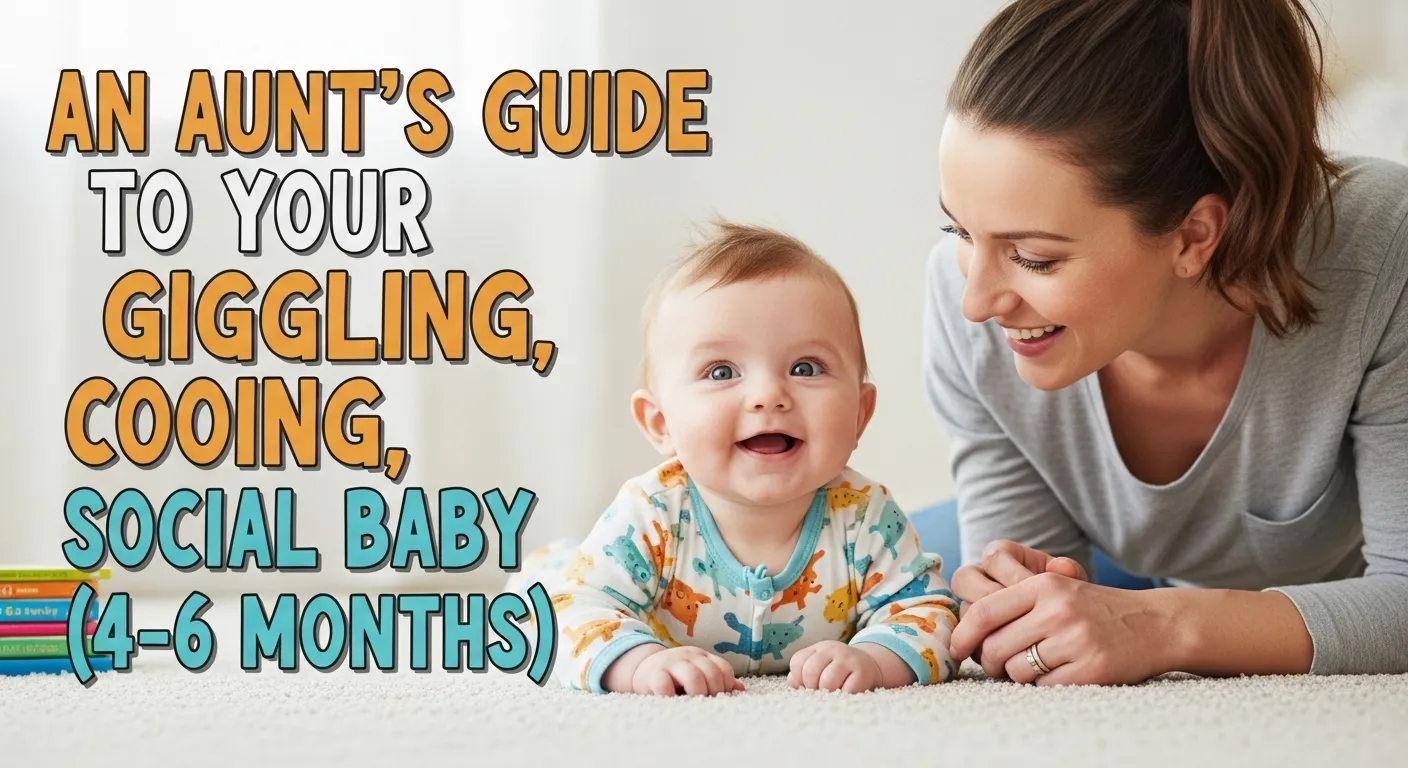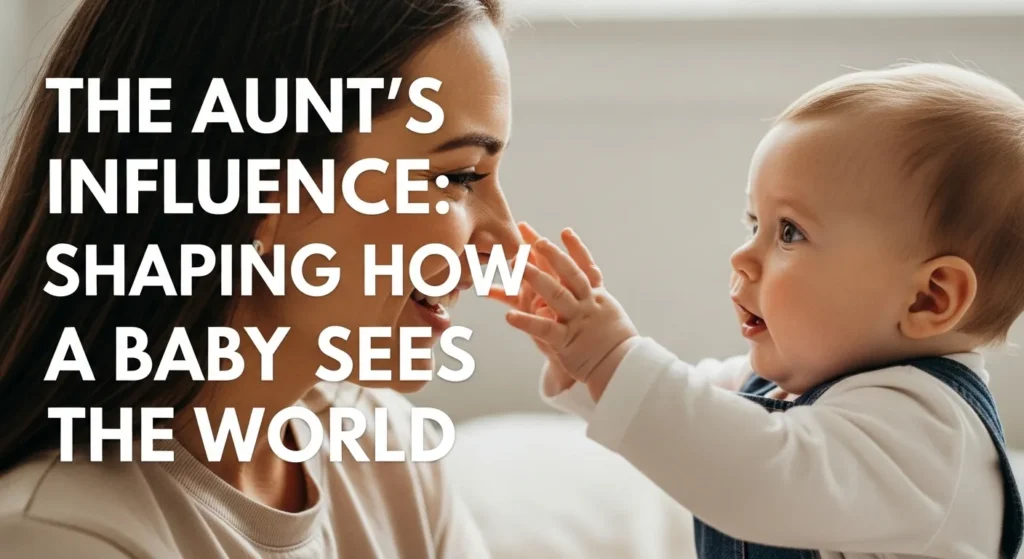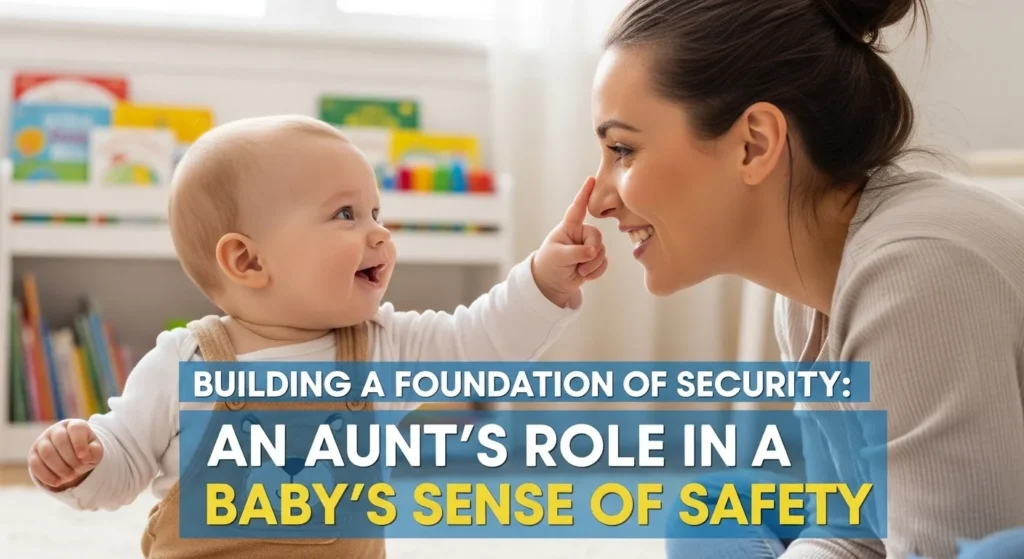
Just when you have mastered soothing a sleepy newborn, everything changes. Suddenly, your little niece or nephew is not just a tiny, cuddly baby anymore. They are looking right at you, babbling, and their face is lighting up with gummy smiles. The social butterfly has arrived.
This is one of the most fun stages of the first year, but what are the best ways for an aunt to connect with this newly interactive baby? By engaging with their new skills like cooing, giggling, and reaching, you can build your bond in exciting and joyful new ways.
What is the biggest change in a baby from 4 to 6 months old?
Direct Answer: The biggest change is their shift from being mostly reactive to being actively social. They are no longer just observing the world. Now, they are intentionally trying to engage with it, and especially with you.
Evidence: This is the stage where the baby’s personality really starts to shine through. They are discovering that they can make things happen, and their favorite thing to make happen is a fun reaction from you. In my book, Auntie of the Year, I describe this exciting shift:
“Babies become more social. Cooing, giggling, and reaching for familiar faces.”
Each of these new skills is a doorway to a deeper connection. Their “coos” are the first steps in a conversation. Their “giggles” are their first expressions of pure delight with you. And their “reaching” is their first physical attempt to close the distance and connect with you on their own terms.
What are the best ways for an aunt to play with a 4 to 6-month-old?
Direct Answer: The best way to play is through simple, repetitive, and responsive games. At this age, your face and your voice are the most interesting toys in the entire world.
Evidence: Your goal is to be a fun and engaging playmate. You do not need fancy toys to do this. The best activities are the ones that involve direct interaction with you.
- Have a “Conversation”: When they coo at you, coo right back. Make your own fun vowel sounds (“aaah,” “oooh”) and pause to give them a chance to respond. This back and forth teaches them the rhythm of a real conversation.
- Become a Giggle Maker: This is your chance to be silly. Find out what makes them giggle. It might be a funny sound, a peekaboo game, or a gentle raspberry sound on their belly. Laughter is a powerful way to bond.
- Encourage Reaching and Grabbing: Hold a colorful, baby safe toy just within their grasp. Encouraging them to reach for it is a great way to help them develop their hand eye coordination and build their confidence.
- Sing Simple Songs: Songs with hand motions are fascinating at this age. Classics like “Itsy Bitsy Spider” or “Pat-a-Cake” combine sound, movement, and your loving presence all in one.
How does this new social stage strengthen my bond as an aunt?
Direct Answer: This stage strengthens your bond by allowing for a true two way interaction for the first time. Your relationship is no longer just about you providing comfort. It is now about the two of you sharing joy.
Evidence: When a baby giggles at your silly face or purposefully reaches for you over someone else, they are actively choosing to connect with you. They recognize you. They remember you as a source of fun and happiness.
These moments of shared laughter and play build a brand new layer onto the foundation of security you built in the first few months. Before, you were a beloved comforter. Now, you are also becoming a fun and cherished playmate.
Frequently Asked Questions
My nephew is 4 months old but isn’t giggling yet. Is that normal?
Yes, it is very normal. While giggling often starts around 4 months, many babies take a bit longer. Every baby follows their own unique timeline. Continue playing and interacting with him, and that first giggle will surprise you when you least expect it.
What are the best toys for a baby this age?
Simple is best. Look for toys they can easily grab, like soft rattles, crinkle books, or teething rings. But remember, the best “toy” for a baby this age is often just your smiling face and your engaging voice.
The baby has started putting everything in their mouth. Is this okay?
Yes, this is a normal and important part of their development. It is how they explore the textures and shapes of the world around them. Just make sure that anything they can reach is clean, safe, and not a choking hazard.


